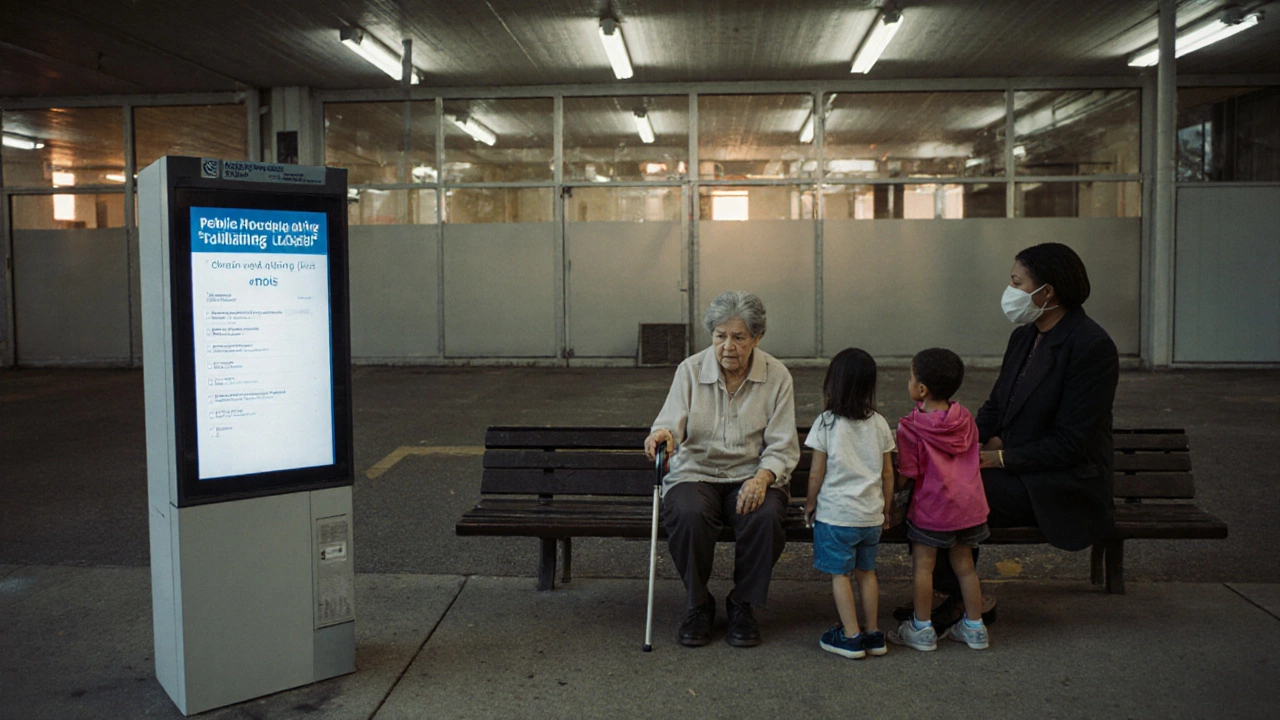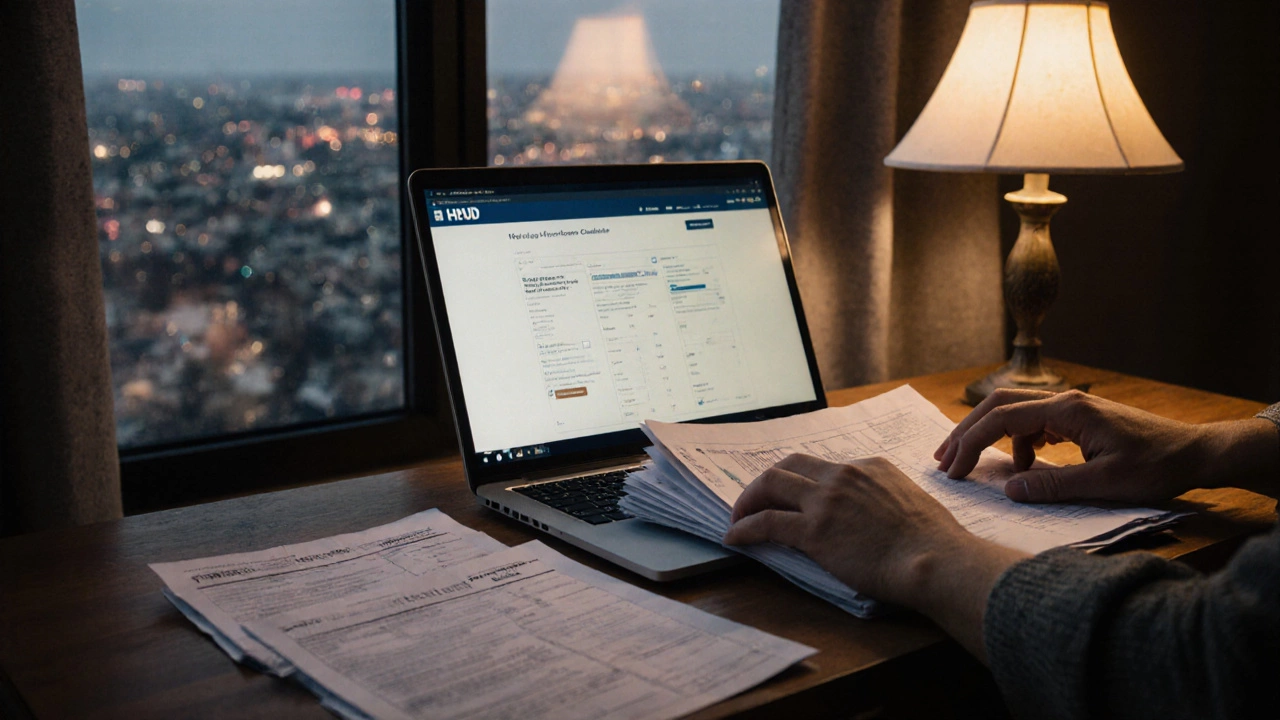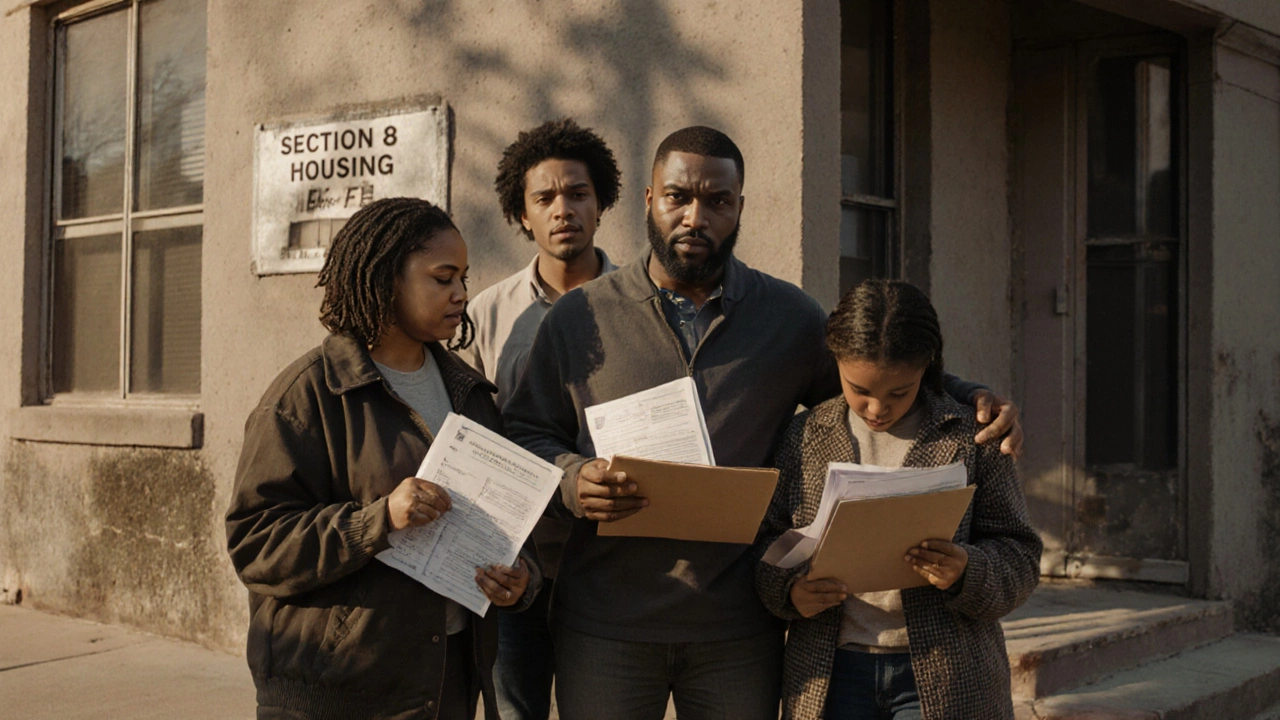Affordable Housing Eligibility Calculator
Check Your Housing Eligibility
See if you qualify for affordable housing based on your location, income, and household size. This tool uses Area Median Income (AMI) data for major cities.
If you're struggling to pay rent in the US, you're not alone. Nearly 11 million households spend more than half their income on housing. But not everyone can get help-even if they’re barely making ends meet. So who actually qualifies for affordable housing in the US? The answer isn’t simple, but it’s clearer than most people think.
Income is the main factor-here’s how it works
Your household income is the first thing housing agencies check. In most cases, you must earn less than 50% of the Area Median Income (AMI) to qualify for government-funded affordable housing. Some programs set the bar even lower, at 30% of AMI, for the most vulnerable families.
What does that mean in real numbers? In New York City in 2025, a family of four earning under $52,000 a year qualifies for low-income housing. In rural Mississippi, that same family could qualify with an income under $35,000. AMI changes by location, so what’s low income in San Francisco isn’t low income in Kansas City.
The Department of Housing and Urban Development (HUD) updates these limits every year. You can find your local AMI on HUD’s website, but most housing authorities publish them too. Don’t assume you don’t qualify because you heard the numbers are too high-check your city’s specific numbers.
Household size matters more than you think
It’s not just about how much you make-it’s about how many people depend on that income. A single person earning $28,000 might not qualify in a high-cost city, but a family of five earning the same amount likely will. Housing programs adjust income limits based on family size because bigger households have higher living costs.
HUD uses standard household size categories: 1-person, 2-person, 3-person, up to 8+ people. Each step up adds a set amount to the income cap. For example, in Los Angeles in 2025, a single person qualifies if they earn under $48,000, but a family of four can earn up to $68,000 and still be eligible.
This is why people often get confused. Two roommates earning $30,000 each might not qualify, but if they’re both parents with two kids, they could. Always list everyone who lives with you-even adult children or elderly parents-as part of your household.
Citizenship and immigration status
You don’t need to be a US citizen to qualify for most affordable housing programs, but you do need to be a qualified immigrant. That includes:
- Lawful permanent residents (green card holders)
- Refugees and asylees
- Individuals granted withholding of deportation
- Victims of trafficking with valid T-visas
People on temporary visas-like students on F-1 visas or workers on H-1B visas-usually don’t qualify. Undocumented immigrants are excluded from federal programs like Section 8 or public housing. But some cities and nonprofits run local programs that don’t check immigration status. In places like San Francisco, Chicago, and Seattle, you can still get help even if you’re undocumented.
Always ask. Many housing agencies won’t ask about your status unless you apply, and some are legally required to protect your privacy.

Special groups get priority
Not everyone waits in the same line. Certain groups get priority on waiting lists because they’re at higher risk of homelessness or have urgent needs:
- Homeless individuals and families
- Victims of domestic violence
- People with disabilities
- Elderly households (62+ years old)
- Families with children
For example, if you’re fleeing an abusive partner and have no place to go, you might jump ahead of someone earning the same income but living in a stable, though unaffordable, apartment. Many housing authorities have special units reserved for survivors of violence or seniors with mobility issues.
Disability doesn’t just mean physical. Mental health conditions, chronic illnesses, and developmental disabilities count too-if they’re documented by a doctor or therapist. You don’t need to be on Social Security Disability Insurance (SSDI) to qualify for priority.
What about assets and savings?
Yes, your bank account matters. Most programs look at your total assets: savings, investments, vehicles beyond one basic car, and sometimes even property you own. If you have more than $5,000 to $10,000 in assets (depending on the program), you might be disqualified.
But here’s the catch: not all assets count the same. Your primary car is usually exempt. Retirement accounts like 401(k)s and IRAs often don’t count toward the limit. Some programs ignore your home equity if you’re trying to buy a home through a homeownership program.
People often think having $3,000 saved up will hurt their chances. It won’t-if it’s in a checking account and you’re applying for rental assistance. But if you have $20,000 in stocks or a second car, that could disqualify you. Be honest on your application. Lying can get you kicked off the program later, even after you’ve moved in.
How to apply-and why most people get rejected
Applying seems simple: fill out a form, submit proof of income, wait. But here’s the truth: over 80% of applicants get rejected-not because they don’t qualify, but because they miss deadlines, submit incomplete paperwork, or apply to the wrong program.
First, find your local public housing authority (PHA). Every city and county has one. Search for “[Your City] public housing authority.” Don’t rely on national websites-they won’t have your local rules.
Second, check if the waiting list is open. Most are closed for years. Some cities open lists once every 2-5 years. If it’s closed, sign up for email alerts. When it opens, apply immediately. Waiting lists can fill in hours.
Third, gather documents before you apply: pay stubs from the last 30 days, tax returns, Social Security letters, birth certificates for everyone in your household, and proof of immigration status if applicable. Missing one document can delay your application by months.
And don’t apply to every program at once. Pick the one that best fits your situation. If you’re elderly, apply for senior housing. If you have kids, look for family programs. Applying to too many can make you look disorganized-or worse, like you’re gaming the system.

Section 8 vouchers: the most common path
Section 8, officially called the Housing Choice Voucher Program, is the most widely used form of affordable housing assistance. It gives you a voucher to rent a private apartment, house, or townhome. The government pays most of the rent directly to the landlord; you pay the rest-usually 30% of your income.
To qualify for Section 8, your income must be below 50% of AMI. But because demand is so high, most agencies prioritize those under 30%. The average wait time is 2-5 years. Some places, like Atlanta or Detroit, have waitlists closed for over a decade.
Section 8 doesn’t guarantee you a place. You still need to find a landlord who accepts vouchers. Some landlords refuse because the inspection process is strict or payments are delayed. But in many cities, there are incentives for landlords to participate-so it’s not impossible.
One big advantage of Section 8: you can move. Unlike public housing, where you’re tied to one building, vouchers let you relocate if your job changes or you need better schools. That flexibility is why so many people fight to get on the list.
What if you don’t qualify?
If your income is too high, your assets too large, or your waiting list is closed, you still have options. Nonprofits, churches, and local governments run emergency rental assistance programs. Some offer one-time help with rent or security deposits.
Look into LIHEAP (Low Income Home Energy Assistance Program) to lower your utility bills. Cut one expense, and your rent might become affordable. Some cities offer rent stabilization laws that cap annual increases. Others have tenant legal aid groups that help negotiate with landlords.
And don’t ignore homeownership programs. Many cities offer down payment assistance for first-time buyers earning under 80% of AMI. If you can save a little and get counseling, you might be able to buy a home for less than you’d pay in rent.
Final reality check
Affordable housing isn’t a handout-it’s a safety net. But the net has holes. The system is underfunded, overstretched, and slow. There are more people who need help than there are units. That’s why patience, persistence, and accuracy matter more than anything.
If you qualify, apply as soon as the list opens. If you don’t, keep checking. Income limits change every year. A raise might push you over the limit now-but next year, inflation could push the limit higher, and you might qualify.
Know your rights. Ask questions. Don’t let bureaucracy discourage you. Millions of Americans are in your shoes. You’re not alone-and help is out there if you know where to look.
Can I qualify for affordable housing if I have a criminal record?
It depends. Federal law allows housing agencies to deny applicants with certain criminal histories, especially violent crimes or drug trafficking. But many agencies have policies that consider the time since the offense, rehabilitation efforts, and whether the crime affects safety. Some states ban blanket bans on renters with records. Always disclose your record-it’s better than hiding it. Many housing authorities will still approve you if you’ve stayed clean for years.
Do I need to be unemployed to qualify?
No. Many people in affordable housing have jobs-often multiple ones. The key is income level, not employment status. A single parent working two part-time jobs at minimum wage might qualify. A person on disability or receiving Social Security can qualify too. What matters is whether your total household income falls below the limit, not how you earn it.
Can I apply if I’m in college?
Most college students living on campus or with parents don’t qualify. But if you’re an independent student living on your own and earning less than the income limit, you can apply. You’ll need to prove you’re not claimed as a dependent on someone else’s tax return. Some housing authorities require proof of enrollment and financial independence. Student loans don’t count as income, but work-study pay does.
How long does it take to get approved?
It varies widely. If you’re on a waiting list, it can take 1 to 7 years. Priority groups (homeless, elderly, disabled) often get placed faster-sometimes within months. If you qualify for emergency assistance or a local program with open slots, you might get approved in 2-4 weeks. Always ask about priority status when you apply.
Will I lose benefits if I get a raise?
Not immediately. Most programs use a gradual phase-out. If your income increases, your rent might go up, but you won’t be kicked out right away. For Section 8, your rent is always 30% of your income, so if you earn more, you pay more-but you still get help. Some programs allow you to stay for up to a year after your income rises above the limit. Use the extra income to build savings or work toward homeownership.
